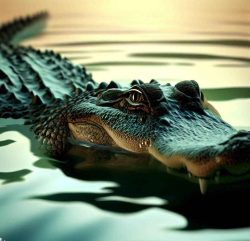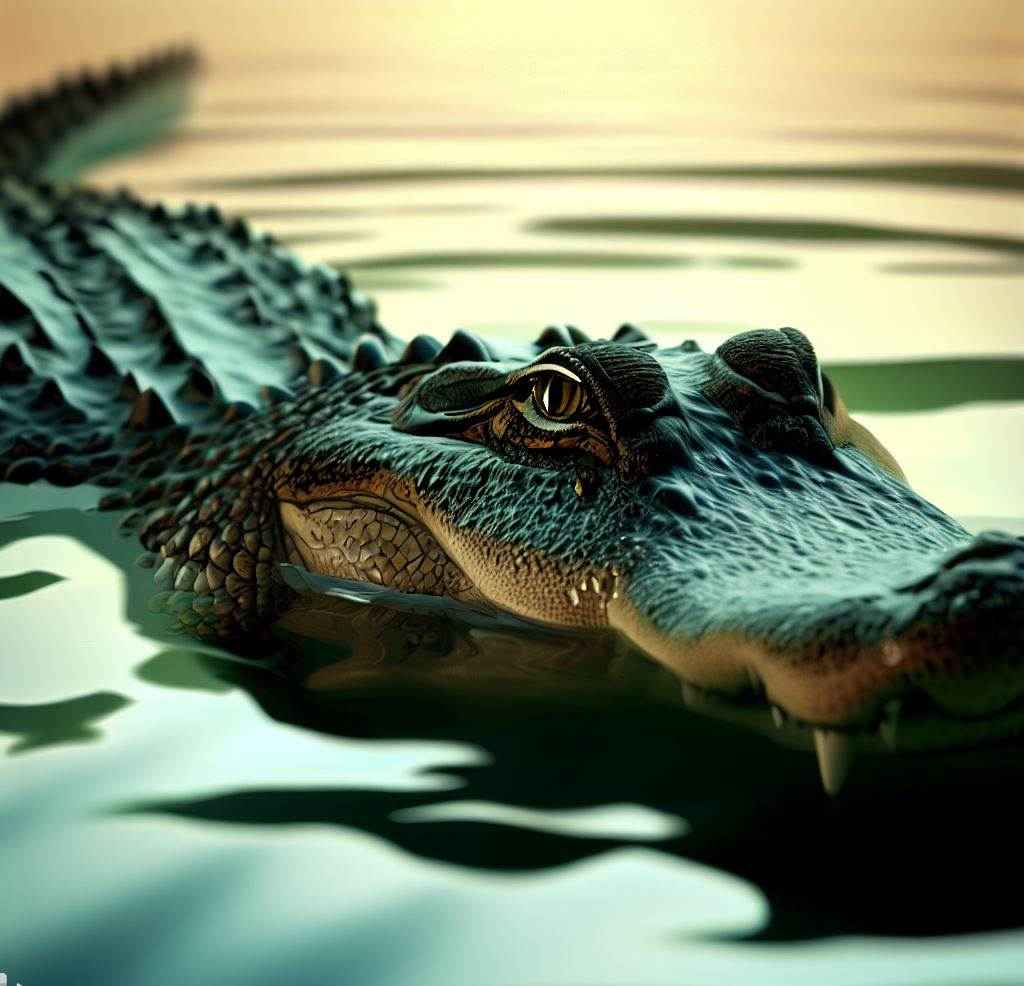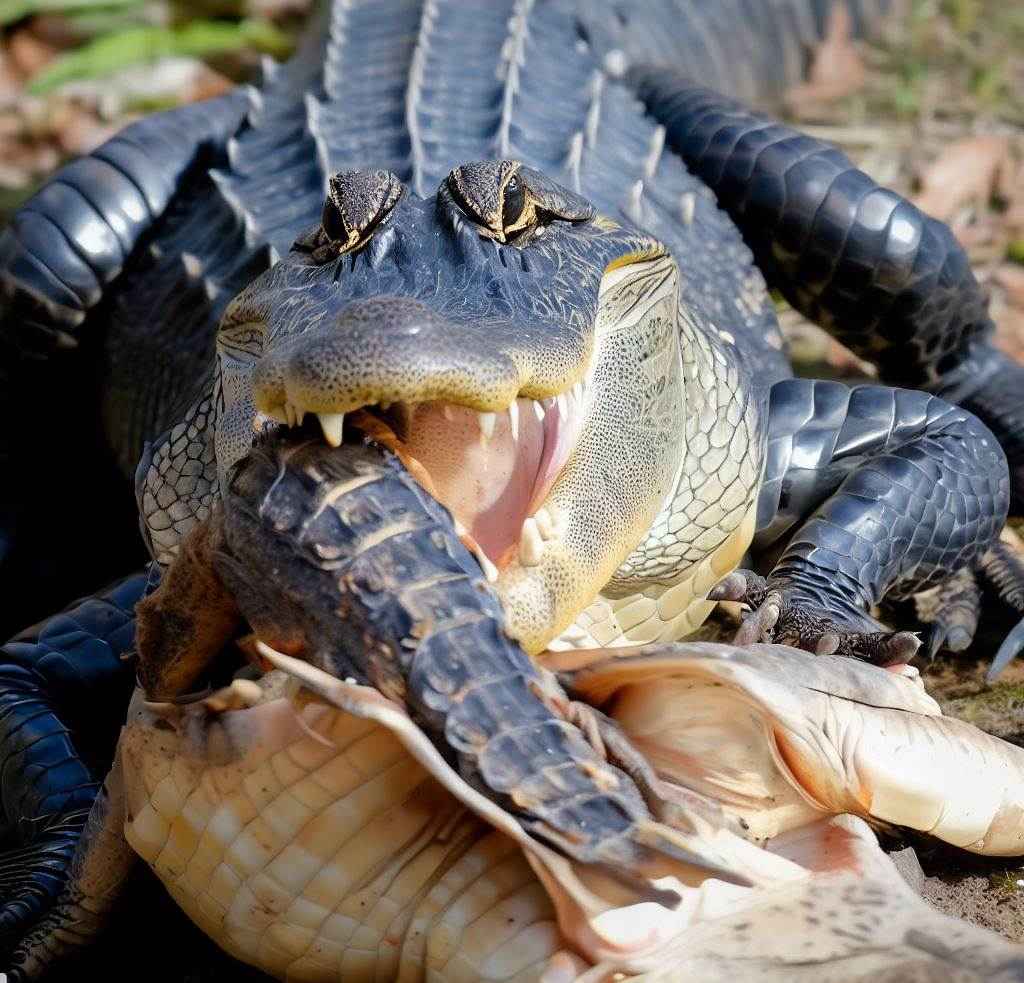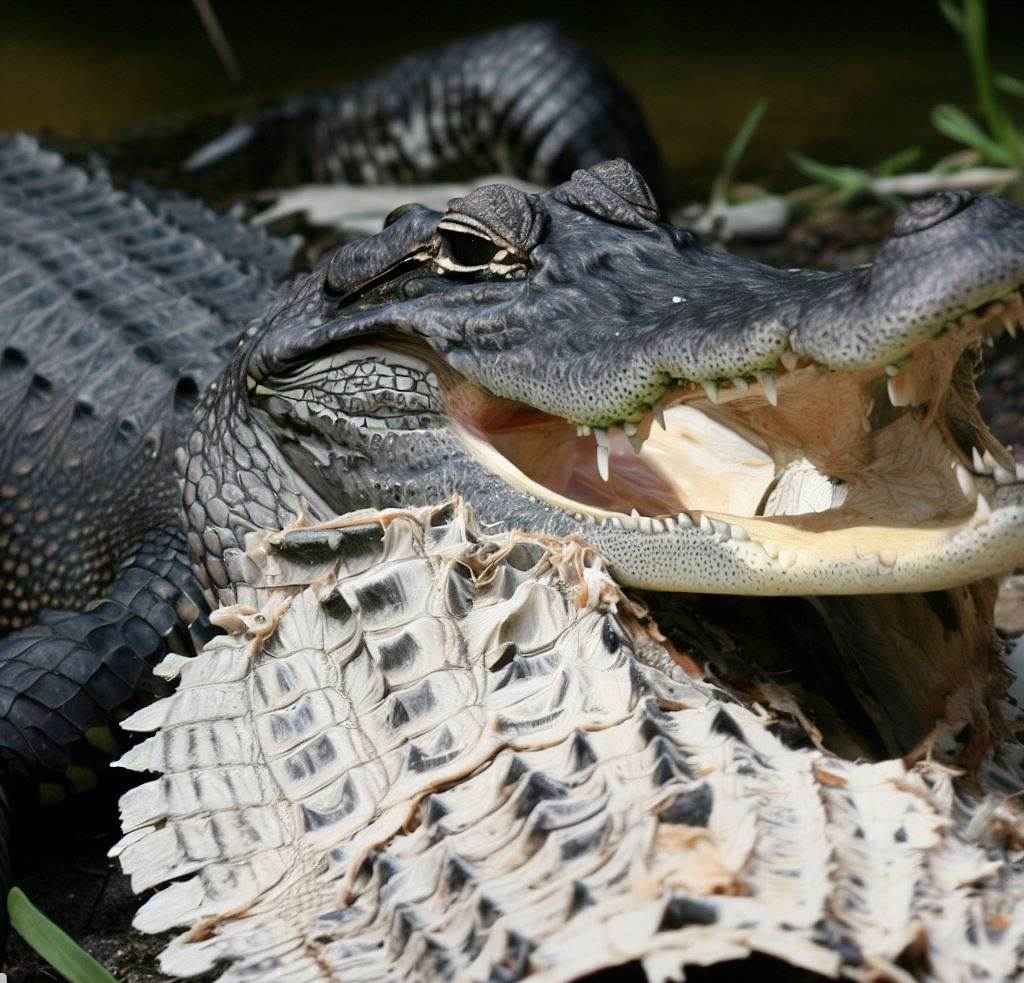Do Alligators Shed Their Skin?
Answer to the question Do Alligators Shed Their Skin? Yes, alligators do shed their skin. Similar to other large reptiles such as snakes, alligators undergo a molting process that allows them to renew their skin. Periodic loss of the outer layer is critical for their general growth, health and survival. The skin shedding process is a complex and interesting occurrence that plays an important part in these reptiles’ life cycles.
They indeed, lose their skin. Their skin becomes worn off and stretched as they develop, demanding regeneration. During the shedding process, alligators secrete a special enzyme that helps separate the old skin from the new one forming underneath. The old skin gradually peels off, revealing a fresh and healthy layer. Younger alligators shed more frequently than older ones, and various factors like temperature and diet can influence the frequency of shedding.
Molting is a vulnerable time for alligators, and they may seek out quieter areas during this period. It is a remarkable sight to witness these ancient creatures renewing themselves, symbolizing the cycle of life and adaptation. The capacity of alligators to shed their skin is an intriguing adaptation that has allowed them to live for millions of years. So, the next time you see an alligator, marvel at nature’s wonders as it sheds its skin, embracing change and development in order to live in its environment.
Introduction:
One question that often arises is, Do alligators shed their skin? Alligators are majestic and ancient reptiles that have wandered the Earth for millions of years and grabbed our imagination with their terrifying appearance along with unique qualities. In this piece for the blog, we will explore this fascinating topic in order to discover the truth behind this natural phenomenon.
Do All Alligators Shed Their Skin?
Molting or shedding is a process in which alligators go through similar to that of reptiles except it happens in patches rather than all at once. This is an essential and natural aspect of their upkeep and growth.
Their skin is covered with scales which are hardened, modified hairs. Their skin sheds to make room for their growing bulk instead of stretching like ours does. Because they develop more quickly, younger alligators shed more often. The process is similar to a reptile makeover in that it renews the outer layer and gets rid of trash, parasites and scars.
Why Do Alligators Shed Their Skin?
For a variety of causes in including development, reptile renewal and defense against environmental hazards, alligators lose skin. Unlike humans, who simply stretch, they shed their old, tight fitting skin to make room for their increasing bodies.
Alligators use shredding as a natural means of getting rid of scars, parasites and dirt so that their skin stays smooth and healthy. It also acts as an upgrade to nature’s armor, offering stronger defense against the surroundings. Shedding is not only a normal process for alligators it is a calculated action that promotes development, revival and preservation of their strongest defenses against the harsh environments of the wild.
Frequency of Alligators To Shed Skin:
The frequency of alligator skin shedding varies depending on their age and growth rate. Smaller alligators may lose their skin more regularly, as often as once every few weeks, but elderly alligators may shed their skin once every few months. Temperature, food, and environmental circumstances can all have an impact on the shedding process. During the molting period, alligators may appear more subdued and less active as they focus on the shedding process.
They may seek out quieter and more secluded areas to minimize disturbances during this vulnerable phase of their life cycle. The frequency of alligators shedding their skin varies based on several factors. On the other hand, adult alligators shed less frequently, typically shedding once every few months. As they reach maturity, their growth rate slows down, and their skin becomes more durable and resistant to wear and tear. Consequently, they don’t require shedding as frequently as when they were juveniles. Environmental factors also play a role in the shedding frequency of alligators.
Temperature and climate can influence how often they shed their skin. In warmer environments with abundant food resources, alligators may shed more frequently, while those in colder regions might shed less often. The overall process of shedding allows alligators to maintain healthy skin, remove scars, and accommodate their growing bodies. This is a natural and essential aspect of their life cycle by enabling them to adapt and thrive in their habitats throughout their long and ancient existence on Earth.
The Molting Process Of Alligators:
The molting process of alligators is a fascinating and essential aspect of their life cycle. It begins with the secretion of a specialized enzyme that helps to loosen the old skin from the underlying epidermis. As the new skin forms underneath, the old skin gradually becomes loose and starts to peel off. The alligator may rub against objects or use its own body movements to aid in the shedding process.
The frequency of shedding varies depending on the age and growth rate of the alligator. Younger alligators shed more frequently than adults since they experience rapid growth. Shedding helps them accommodate their changing bodies and ensures they have fresh, undamaged skin to protect them from the environment. During the molting period, alligators may exhibit reduced activity and seek out quieter areas to minimize disruptions while they are more vulnerable.
It is a crucial time for them, as the old skin peels away to reveal a fresh, vibrant layer underneath. The molting process is a remarkable natural phenomenon that highlights the adaptability and resilience of alligators. It allows them to continue thriving in their habitats and serves as a reminder of the wonders of the animal kingdom. Another question is What is the average lifespan of a alligator? visit the post if you want to know about it.
Reason Why Alligators Shed Their Skin:
Alligators shed their skin for several important reasons that are essential for their survival and well-being. The primary reason is growth. As alligators age, they undergo significant growth spurts, causing their bodies to outgrow their current skin. Shedding allows them to accommodate their increasing size and ensures their skin remains functional and protective.
Another reason for shedding is to renew their skin. Over time, alligators’ skin can become worn out, damaged, or scarred from various activities and encounters in their environment. By shedding old skin, they can reveal a fresh, unblemished layer, which helps in maintaining their overall health. Furthermore, shedding allows alligators to get rid of any parasites or hitchhiking organisms that might have attached themselves to their skin.
The molting process also plays a crucial role in thermoregulation. Shedding allows alligators to regulate their body temperature more efficiently, especially in warmer climates. Fresh skin enables better heat exchange and helps them stay cool.
Do Alligators Have Tough Skin:
They indeed have tough skin, and it is one of their distinctive features as formidable reptiles. Their skin is specially designed to provide them with a strong and durable outer layer, offering excellent protection against the elements and potential threats in their environment. As the question is Do alligators shed their skin? yeah alligator skin is covered in bony plates called osteoderms or scutes, which are embedded in tough, overlapping scales.
These scales act as natural armor, safeguarding them from injuries and attacks. The tough skin serves as a defense mechanism against predators, making it challenging for other animals to harm them easily. The unique composition of alligator skin contributes to its toughness. It contains a protein called keratin, which is the same protein found in human nails and hair. This gives the skin added strength and resilience, allowing alligators to withstand various physical challenges they encounter during their lives. The toughness of their skin is not just advantageous for protection but also assists in thermoregulation.
Alligators can bask in the sun to absorb heat through their tough skin, and later, the same skin helps retain body heat in colder conditions. Overall, the tough skin of alligators is a remarkable adaptation that has contributed to their survival for millions of years. It is a testament to their incredible evolution and a testament to the extraordinary resilience of these ancient reptiles.
Comparison Of alligator To Other Reptile In Shedding Skin:
When comparing alligators to other reptiles in shedding skin, some distinct differences and similarities emerge, each influenced by the specific characteristics of these reptilian species.
1. Alligators:
Alligators shed their skin less frequently than some other reptiles. Young alligators shed more often, approximately every few weeks, due to their rapid growth rate. As they mature, shedding becomes less frequent, occurring about once every few months. Alligators shed their skin in smaller, fragmented pieces, which is a notable contrast to snakes.
2. Snakes:
Snakes are known for shedding their skin more frequently than alligators. They may shed several times a year, and the shedding process is more noticeable. Snakes often shed their skin in a single piece, as their elongated and slender bodies allow for a more seamless shedding experience.
3. Lizards:
Lizards shed in a variety of patterns. Some species, like alligators, shed their skin in little bits, whilst others lose bigger chunks or even the entire skin at once. The frequency of shedding varies between species and can be regulated by variables like growth rate and environmental circumstances.
4. Crocodiles:
Crocodiles, close relatives of alligators, have similar shedding patterns. They shed less frequently as they age, and the process is not as noticeable as in snakes.
Despite these differences, shedding serves a vital purpose for all reptiles, including alligators. It allows them to grow, renew their skin, remove damaged or scarred areas, and facilitate proper thermoregulation. Each species has evolved its unique shedding characteristics to adapt to their specific environments and ensure their continued survival in the diverse and fascinating world of reptiles.
Things Happen When Alligators Shed Their Skin:
When alligators shed their skin, several fascinating things occur as part of this natural process. The shedding, or molting, is a crucial event that contributes to the alligator’s overall health, growth, and survival.
1. Renewal of Skin:
The primary purpose of shedding is to allow the alligator to replace its old and worn-out skin with a fresh layer. As the new skin forms underneath, the old skin starts to loosen and peel off, revealing the vibrant new scales underneath.
2. Growth Accommodation:
Alligators shed their skin to accommodate their growth. Younger alligators, experiencing rapid growth, shed more frequently to keep up with their changing body size. Shedding enables them to expand and adapt to their environment.
3. Healing and Scar Removal:
Through shedding, alligators can shed damaged or scarred skin. This process aids in healing wounds and reducing the appearance of previous injuries, ensuring their skin remains resilient and healthy.
4. Parasite Removal:
Shedding helps alligators get rid of parasites or hitchhiking organisms that might have attached themselves to their skin. This cleaning procedure improves their cleanliness and lowers the chance of illness.
5. Thermoregulation:
Shedding also plays a role in thermoregulation. Alligators can better absorb and distribute heat via their fresh skin after shedding old skin, helping them to maintain their body temperature more efficiently.
Alligator skin shedding is a unique phenomenon that illustrates their capacity to adapt and survive in ever-changing settings. It secures their survival and acts as a tribute to nature’s design in these old and amazing reptiles.
Facts & Features Of Alligators:
- Alligators are fascinating creatures with an ancient lineage dating back to prehistoric times.
- They have robust, muscular bodies covered in tough skin and possess powerful jaws with sharp teeth for capturing prey.
- Adapted to a semi-aquatic lifestyle, alligators inhabit freshwater habitats like swamps, marshes, and rivers.
- They are exceptional swimmers and skilled predators, relying on external heat sources to regulate their body temperature.
- Alligators communicate through vocalizations and body postures, using the famous “alligator bellow” during mating season.
- Female alligators show remarkable parental care, protecting their nests and guiding hatchlings to water.
- Alligator numbers have rebounded as a result of conservation initiatives, and they are currently classified as “Least Concern” by the IUCN. Alligators, as living remnants of the past, are a monument to nature’s persistence.
- Their distinct characteristics and behaviors make them essential components of their ecosystems, generating awe and adoration as a wonderful component of the natural world’s diversity and beauty.
FAQs:
1 Does alligator skin peel?
Yes, alligator skin does peel. Alligators undergo a molting process where they shed their old skin to allow for growth and renewal.
2 Does crocodile shed skin?
Yes, crocodiles do shed their skin. Like alligators, crocodiles undergo a molting process to shed their old skin for growth and renewal.
3 Do alligators have scales or skin?
Alligators have both scales and skin. Their skin is covered with scales, which provide protection and form their characteristic tough and durable outer layer.
4 Do alligators have skin?
Yes, alligators have skin. Their bodies are covered in a tough, durable skin that provides protection and helps regulate their body temperature.
5 Is alligator skin hard or soft?
Alligator skin is hard and tough due to the presence of bony scales, which provide a protective outer layer for the reptile. It is one of the distinguishing features that make alligators well-adapted to their environment.




